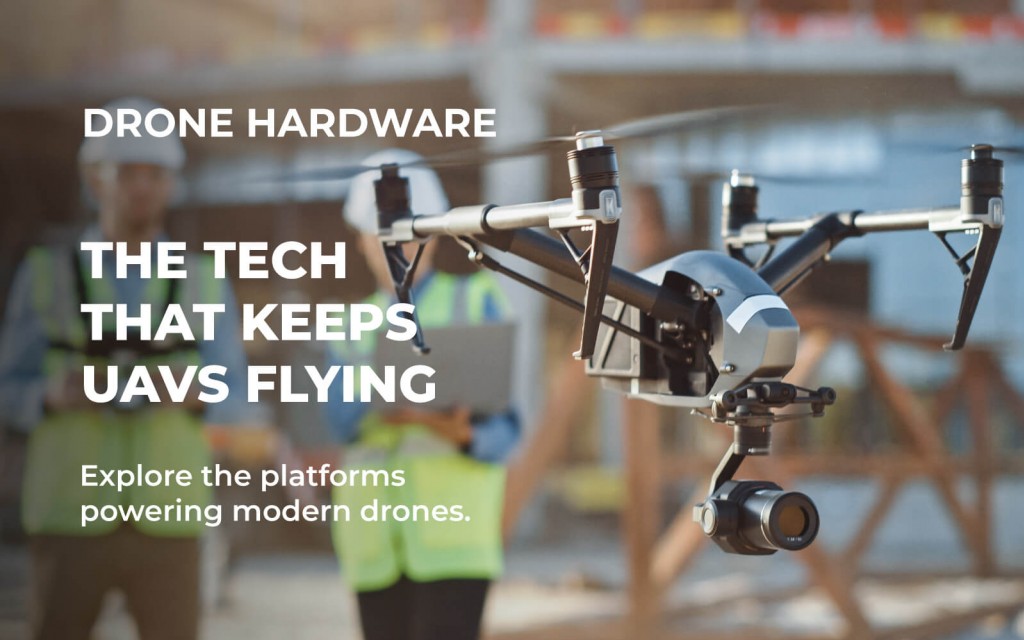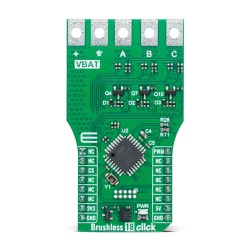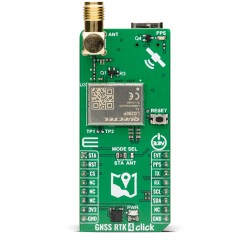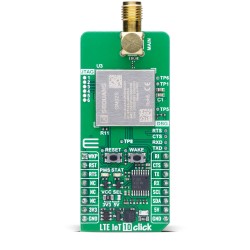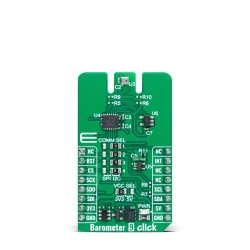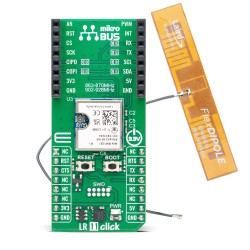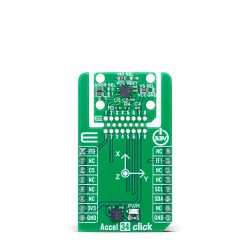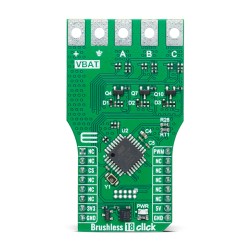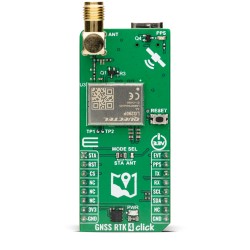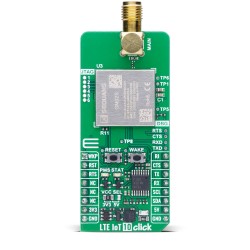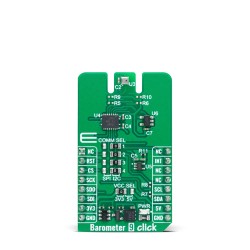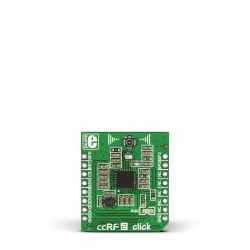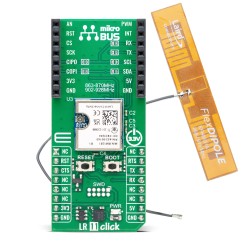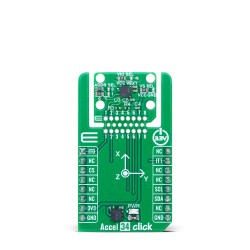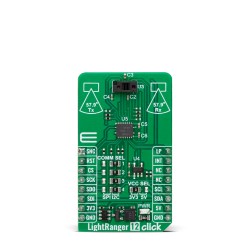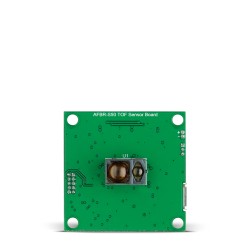The world of unmanned aerial vehicles (UAVs) and drones is fascinating. It's a realm where technology, innovation, and creativity converge.
These devices, once exclusive to military applications, are now ubiquitous. They're used in industries ranging from agriculture to entertainment, and their potential is still being explored.
But what exactly is a UAV?
In simple terms, a UAV, or drone, is an aircraft without a human pilot onboard. It's part of a broader system known as UAS, or Unmanned Aircraft System, which includes the UAV, the ground control station, and the communication systems.
The hardware that makes up these UAVs is complex and varied. It includes components like the airframe, propulsion system, navigation system, control system, and payload. Each of these elements plays a crucial role in the UAV's operation and functionality.
Understanding these components is key to grasping the capabilities and potential of UAVs. It's also essential for those interested in UAV development, whether for personal projects, professional use, or business applications.
This article aims to delve into the intricacies of UAV hardware. We'll explore the various components that make up a UAV, the different types of UAVs, and the innovative platforms being developed.
We'll also look at some real-world applications of UAVs, highlighting their versatility and potential. Additionally, we'll discuss the challenges faced in UAV hardware development and the future trends in this exciting field.
Whether you're a drone enthusiast, a UAV developer, a student of aeronautics, or a business owner looking to integrate UAV technology into your operations, this article is for you. So, let's embark on this journey inside the drone, exploring the hardware platforms for UAV development.
Welcome to the world of UAVs and drones.
Introduction
Unmanned aerial vehicles, commonly known as UAVs or drones, have revolutionized many industries. Originally designed for military purposes, these devices have spread their wings into various commercial and recreational sectors. They are now staple tools in fields like agriculture, filmmaking, and emergency services, showcasing their versatility and adaptability.
The appeal of UAVs lies in their ability to perform tasks that are beyond human reach, both literally and figuratively. They can access hard-to-reach places, gather real-time data, and operate in hazardous environments without risking human life. This makes them invaluable in applications ranging from environmental monitoring to disaster response. As technology advances, UAVs continue to evolve, becoming more efficient, smarter, and more autonomous.
Their growing ubiquity comes with its own set of challenges and opportunities. As industries embrace UAV technology, there's a growing need to understand the hardware that makes these aerial vehicles tick. This includes comprehending how various components such as propulsion, control systems, and sensors work together to enable flight.
Understanding these elements is critical for anyone involved in UAV development or operations, providing the foundation for innovation and advancement in the field. By exploring these aspects, we can unlock the full potential of UAVs, driving forward their integration into more areas of life.
Understanding Drones and UAV
What is UAV?
A UAV, or Unmanned Aerial Vehicle, represents a flight device without a human pilot onboard. These vehicles can be remotely piloted or fly autonomously via onboard computers and sensors. UAVs are commonly referred to as drones, a term popularized through media and consumer technology.
The fundamental purpose of a UAV is to perform tasks traditionally done by manned aircraft, but with greater safety and efficiency. UAVs are crucial in applications where human presence is impractical or risky, from surveillance and reconnaissance to mapping and precision agriculture.
What does UAV stand for?
The acronym UAV stands for Unmanned Aerial Vehicle. Each word in this term contributes to its distinctive qualities. "Unmanned" highlights the absence of an onboard pilot, distinguishing UAVs from manned aircraft. "Aerial" signifies the vehicle's domain of operation - airborne tasks over land or sea. "Vehicle" denotes its mobility and capability of transportation or carriage of payloads.
This term encapsulates a broad spectrum of aircraft types, from small consumer drones to large military machines. Consequently, understanding what UAV stands for helps clarify the vast potential applications and implications of these technological marvels in modern society.
What does UAS stand for?
UAS, or Unmanned Aircraft System, encompasses more than just the UAV itself. It includes the full infrastructure that supports UAV operation. This system integrates the UAV, ground control stations, communication links, and any other elements needed for effective operation. Understanding the terminology is crucial when considering how UAVs function within broader systems.
The "System" in UAS emphasizes the integration of multiple components working in unison, a step beyond the isolated vehicle. Thus, UAS highlights a holistic approach to unmanned aviation, ensuring that the aerial vehicle performs its intended tasks efficiently and safely.
In industry discussions, UAS is a frequent term because it represents the comprehensive framework necessary for UAV deployment. For developers and users alike, grasping what UAS stands for is crucial for navigating technical advancements and regulatory frameworks in unmanned flight technology.
Key Components of UAV Hardware
The effectiveness and reliability of UAVs depend on their hardware components. These parts must work together flawlessly for successful operations. Key components include propulsion systems, flight controllers, sensors and cameras, battery and power management, and communication systems. Understanding these elements provides insight into UAV functionality.
Propulsion Systems
Propulsion is essential to UAV movement and maneuverability. It primarily includes electric motors, internal combustion engines, and occasionally jet engines. These systems convert energy into thrust, allowing the UAV to lift off and navigate.
Electric motors are popular in UAVs due to their quiet operation and efficiency. They are typically used in smaller drones. On the other hand, larger UAVs might use internal combustion or jet engines for increased power and range. The choice of propulsion influences the UAV's design and application.
Flight Controllers
Flight controllers are the UAV's brain, processing data from various inputs to maintain stable flight. They execute commands, manage sensors, and control flight dynamics. This core component ensures precision and responsiveness during operations.
A typical flight controller integrates various features like gyro and accelerometer data. These elements help maintain balance and control during complex maneuvers. Advanced controllers may also offer GPS integration for autonomous navigation, enhancing the UAV's capabilities in diverse scenarios.
Sensors and Cameras
Sensors and cameras are crucial for gathering data and enabling surveillance functionalities. They allow the UAV to interact with its environment, detect obstacles, and capture images. The choice of sensors and cameras often varies based on the UAV's intended use.
Infrared sensors, LiDAR, and regular RGB cameras are common in UAVs. They are used for applications from filming to mapping and scientific data collection. These devices expand the UAV’s versatility, making them indispensable in numerous fields such as agriculture and security.
Battery and Power Management
Reliable power management is vital for UAV endurance and performance. Batteries, especially lithium polymer (LiPo) ones, are a common power source. They offer a high energy density, crucial for keeping UAVs airborne.
Good power management systems optimize battery use, improving flight times and operational efficiency. They ensure the safe use of power, protecting UAV components during flights. Balancing power use and conserving energy remains a priority for developers aiming to enhance UAV performance and longevity.
Communication Systems
Communication systems enable control and data transmission between the UAV and operators. This component includes radios, antennas, and sometimes satellite links. Effective communication systems ensure reliable operation over various distances and conditions.
The choice of communication system depends on the UAV's range and mission requirements. Short-range systems might rely on Wi-Fi, while long-range ones could use advanced frequencies or satellite support. Secure and efficient communication is critical for unmanned aerial systems to execute complex operations in real-time.
Types of Unmanned Aerial Systems
Unmanned Aerial Systems (UAS) are varied, each designed for specific needs and capabilities. These systems can be classified into categories based on their design and propulsion methods. Understanding these types helps in selecting the right UAV for specific applications. Here are the primary types: fixed-wing UAVs, multi-rotor drones, and hybrid UAVs.
Fixed-Wing UAV
Fixed-wing UAVs resemble conventional airplanes with wings that provide lift as they move. This design makes them ideal for long-range missions and high-speed flights. Fixed-wing UAVs can cover vast areas and remain airborne for extended periods, making them perfect for mapping and surveying.
These UAVs require runways or launching devices for takeoff and landing. Their endurance and speed are their main advantages. However, their need for space during operation can limit their use in urban environments or constrained areas.
Multi-Rotor Drones
Multi-rotor drones, commonly recognized as quadcopters, have multiple rotors that offer superior maneuverability. They are excellent for tasks requiring hovering or precise movements, like photography or inspection. These drones are user-friendly and can take off and land vertically, making them versatile for various environments.
The simplicity and stability of multi-rotor systems make them accessible for both hobbyists and professionals. However, their flight times and range tend to be shorter than fixed-wing models. This trade-off is due to the energy demands of maintaining stable flight on numerous rotors.
Hybrid UAVs
Hybrid UAVs combine features of both fixed-wing and multi-rotor designs. They offer vertical take-off and landing capabilities alongside long flight durations. This versatility suits them for missions needing both mobility and endurance.
These UAVs use rotors for lift-off and landing and switch to fixed-wing configurations for cruising. This adaptability covers a broader range of applications, such as delivering goods or conducting extensive surveys. While more complex than single-type UAVs, their all-around performance maximizes operational flexibility.
Case Studies: Innovative UAV Platforms
UAV platforms are revolutionizing various sectors by providing innovative solutions and efficiencies. This section explores the transformative impact of UAVs in military, commercial, and research applications. Each case study illustrates unique attributes and contributions of UAVs to their respective fields.
Military Applications
In the military domain, UAVs have become indispensable tools for reconnaissance and combat. Their ability to operate without risking pilot lives has transformed tactical operations. For instance, the Predator drone is known for its surveillance capabilities and precision strikes, altering the landscape of modern warfare.
These drones provide real-time intelligence, enabling swift decision-making on complex missions. Their stealth features and extended range ensure they gather data from otherwise inaccessible or dangerous zones, offering strategic advantages.
Commercial Use Cases
In the commercial sector, UAVs are enhancing operations across industries. Companies use drones for delivery services, inspecting infrastructure, and improving agricultural productivity. An example includes Amazon's Prime Air service, aiming to deliver packages in record time, promising convenience and speed.
In agriculture, drones equipped with multispectral sensors optimize crop health monitoring. These UAVs allow farmers to increase yield through precise data analysis, ensuring efficient resource use and sustainable practices.
Research and Development
Research institutions utilize UAVs to expand knowledge and innovation. Drones are deployed in environmental studies, collecting data on climate change and wildlife. For instance, researchers utilize UAVs for tracking endangered species, providing crucial insights into behavioral patterns and habitat needs.
The versatility of UAVs fosters advancements in robotics and AI technologies, pushing boundaries in navigation systems and autonomy. These efforts pave the way for future developments that could further integrate UAVs into everyday life, broadening their scope and impact.
Challenges in UAV Hardware Development
Developing UAV hardware presents significant challenges to engineers and manufacturers. Key hurdles include regulatory barriers and technological constraints that impede progress. Each challenge demands unique strategies and solutions to overcome.
Regulatory Compliance
Navigating the regulatory landscape is complex for UAV developers. Authorities like the FAA enforce strict guidelines to ensure safety and privacy. Compliance with these rules is essential but can slow down innovation due to lengthy approval processes.
For UAV manufacturers, staying updated with changing regulations across regions complicates global operations. Meeting these standards requires rigorous testing and documentation, which can increase costs and extend development timelines.
Technical Limitations
Technical hurdles in UAV hardware stem from the need for lightweight yet durable materials. To enhance performance, drones require efficient power systems and advanced propulsion technologies. However, balancing these demands with cost-effectiveness remains difficult.
Battery life is a persistent issue, limiting flight duration and operational efficiency. Moreover, integrating sophisticated navigation and communication systems requires overcoming design and complexity constraints, pushing the boundaries of current technological capabilities.
Future Trends in UAV Hardware
The field of UAV hardware is poised for significant advancements. Emerging technologies promise to revolutionize how drones are designed, built, and utilized across industries. One promising trend is the integration of artificial intelligence (AI) into UAV systems.
AI algorithms can enhance a drone's capability to process data and execute complex tasks autonomously. This will likely lead to improvements in areas such as object recognition and real-time decision-making.
Another exciting development is the ongoing improvement of battery technologies. As researchers make strides in energy storage, UAVs will benefit from longer flight times and increased efficiency. Innovations such as solid-state batteries and energy-dense materials are on the horizon. These advancements could transform the way drones are powered and potentially reduce the frequency of recharging.
In parallel, advances in materials science are influencing UAV hardware design. The use of composite materials and lightweight alloys contributes to more durable and efficient airframes. These materials offer better performance while maintaining energy efficiency. As production methods like 3D printing become more sophisticated, UAVs will continue evolving in design and capability.
Additionally, new communication technologies promise to enhance UAV operations. The advent of 5G networks offers faster and more reliable connectivity, which could allow for real-time data transfer over long distances. This would improve the coordination of drone fleets and enable more complex missions. As communication infrastructure expands, expect UAVs to become even more integral to various sectors, including logistics and emergency response.
Conclusion
The world of UAVs and drones continues to advance rapidly, bringing new opportunities and challenges. UAV technology has evolved from simple remote-controlled devices to sophisticated aircraft capable of autonomous operations. As hardware platforms improve, drones are finding their place in a wide range of applications, from agriculture to disaster response.
Understanding the components and systems that make up UAVs is crucial for anyone involved in their development or deployment. Advancements in areas like propulsion, sensors, and communication systems are key to maximizing UAV potential.
As we look to the future, continued innovation will drive the industry forward, overcoming present limitations and unlocking new possibilities for drones and their applications. In this dynamic field, the only constant is change, encouraging an ongoing commitment to learning and adaptation.
Prototype UAVs with MIKROE’s Modular Ecosystem
Build faster with modular development tools. MIKROE’s Click boards™ let you instantly plug in GPS, IMUs, wireless telemetry, and sensors to your drone platform using our mikroBUS™ standard. Pair them with Fusion or UNI-DS v8 boards and develop your UAV firmware in NECTO Studio.
REAL-WORLD ROBOTICS PROJECTS: CLICK BOARDS™ ON EMBEDDEDWIKI
To go from theory to practice, visit EmbeddedWiki - MIKROE’s comprehensive resource for embedded development. There you'll find UAV-relevant projects that use the same Click boards featured in this article, complete with open-source code, wiring diagrams, and detailed explanations.
These examples are perfect for accelerating your own drone development, offering a head start for tasks like altitude sensing, directional control, or autonomous navigation. EmbeddedWiki helps you turn modular concepts into real-world UAV solutions - fast.
ABOUT MIKROE
MIKROE is committed to changing the embedded electronics industry through the use of time-saving industry-standard hardware and software solutions. With unique concepts like Remote Access, One New Product/Day, Multi-Architectural IDE and most recently, the EmbeddedWiki™ platform with more than million ready-for-use projects, MIKROE combines its dev boards, compilers, smart displays, programmers/debuggers and 1850+ Click peripheral boards to dramatically cut development time. mikroBUS™; mikroSDK™; SiBRAIN™ and DISCON™ are open standards and mikroBUS only has been adopted by over 100 leading microcontroller companies and integrated on their development boards.
Your MIKROE











